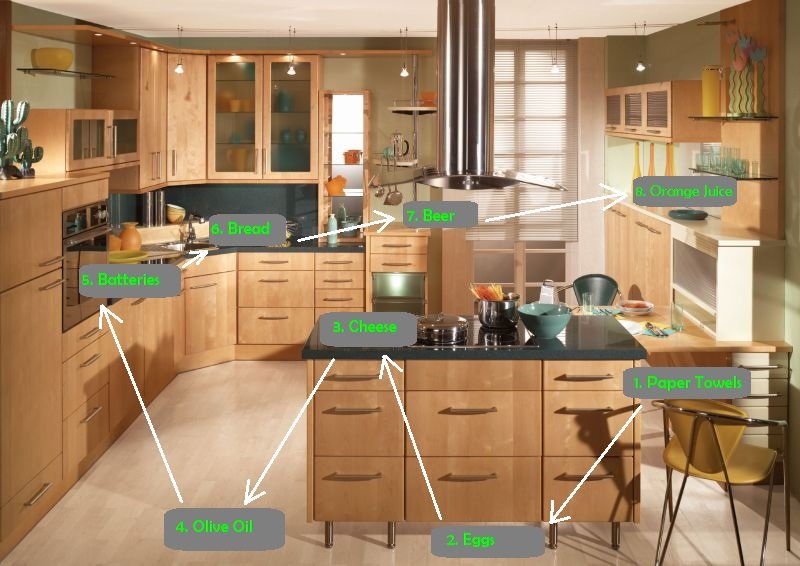
Believe it or not, I read a book with the title Moonwalking with Einstein. I can't remember how I've heard of it. It was written by Joshua Foer and it's a book on memory and the art of memorization using practices from times immemorial.
You and I can apply the practices suggested in the book right now and be fascinated of how it works. In fact, you'll see about that in a moment. Deliberate practice is the keyword here.
To give you a bit of a background on the author, Joshua Foer was a journalist by occupation. He got to write his book as a testimony for his ability to train his way to the title of 2006 USA's Memory Champion. He confesses that he is a normal person without any extraordinary capabilities.
I didn't wait to finish reading the book to start implementing some of the techniques discussed in his book. With practice, I was able to memorize a complete deck of poker cards in about 8 minutes. It took me 2 weeks of daily practice to achieve such performance. Memory champions can memorize a deck of poker cards in less than 30 seconds. So, Vegas...be prepared!
But, let's leave aside memorizing poker cards for a future post. That's slightly a bit more advanced than what you're about to learn here. Let's start with the basic stuff.
The Method of Loci
This is the name of the technique often used by memory athletes. According to Wikipedia:
“The techniques of memory palace, also known as the journey method or the method of loci, were refined and codified in an extensive set of rules and instruction manuals by Romans like Cicero and Quintilian, and flowered in the Middle Ages as a way for the pious to memorize everything from sermons and prayers to the punishments awaiting the wicked in hell.”
In The Hippocampus as a Cognitive Map, a book from Oxford University Press we find a more detailed explanation of the method of loci:
"In this technique the subject memorizes the layout of some building, or the arrangement of shops on a street, or any geographical entity which is composed of a number of discrete loci.
When desiring to remember a set of items the subject literally 'walks' through these loci and commits an item to each one by forming an image between the item and any distinguishing feature of that locus.
Retrieval of items is achieved by 'walking' through the loci, allowing the latter to activate the desired items. The efficacy of this technique has been well established (Ross and Lawrence 1968, Crovitz 1969, 1971, Briggs, Hawkins and Crovitz 1970, Lea 1975), as is the minimal interference seen with its use."
Throughout history, this method was used by:
- Athenian statesmen to memorize thousands of names
- Middle Ages' scholars to memorize entire books - before the printing press was invented
- others to pass information to future generations
- etc.
In each case most of those who used the method of loci were not different from you and me. The technique works because it exploits the way our brain processes and stores information such as places, images, and stories. Let's now become familiar with the method of loci by teaching you how to memorize a shopping list that includes 8 items.
Yes, I know this may seem banal...But you have to go through initiation first...
Here’s the list:
- Paper Towels
- Eggs
- Cheese
- Olive Oil
- Batteries for the remote controller
- Bread
- Beer
- Orange Juice
Implementation of the Memory Palace
As suggested in Oxford's book, think of a very familiar place from your daily life: your kitchen, bedroom, backyard, or the street you're living on - to name a few. For this purpose, I'm going to use the kitchen. Here's how it's done.

1. Imagine getting into the kitchen from the right. Imagine having the paper towels on the chair.
Here's a trick that can help you better store them in your memory: think of them being of un-normal proportions (not as they appear in reality).
2. Keep walking...Look down and imagine the eggs being on the floor. Careful not to step on them!
3. Now, look on the kitchen table. There's a big smelly chunk of cheese there.
Thinking of its smell helps you better store it in memory. In fact, the trick is to try to engage as many senses as possible into the memorization process.
4. See that bottle of olive oil on the floor? The mess you'd make breaking it. Imagine that!
5. As you get closer to the oven, your anxiety increases. You remember placing the batteries inside the oven. Quick! Take them out before they explode!
See how fun it all is?
6. As you move along your kitchen itinerary, you see the bread in the sink. The sink is not empty and the bread is like a sponge absorbing water as we speak. Take a mental picture of the scenario. Keep moving...
7. Look on the countertop and see the treat you've been looking for: a pack of beer. It's gonna be great sipping it tonight while watching the game.
8. The last item on our shopping list - orange juice. Let's imagine seeing a jar of freshly squeezed and very colorful orange juice exactly where it is placed in the image. To better store it in memory, imagine its taste and vivid color.
This entire mental journey through your desired place could take longer for the first time. But with practice you could reduce it to seconds. Moreover, deliberate practice will help you increase the number of items you can memorize.
And, to better store the items into memory make sure you engage as many senses as possible (sound, smell, taste, color, etc) and use distortion (imagining things as being different from reality - but not too different).
Ending notes
If I see interest in this particular topic, my next post is going to be on memorizing a deck of poker cards. I will show you exactly how I did it. To give you a flavor of what it means to memorize an entire deck of cards in 20.4 seconds, take a look at Simon Reinhard doing it.
Credits for Images: Nikos Niotis and Andreea
Cristi Vlad, Self-Experimenter and Author
